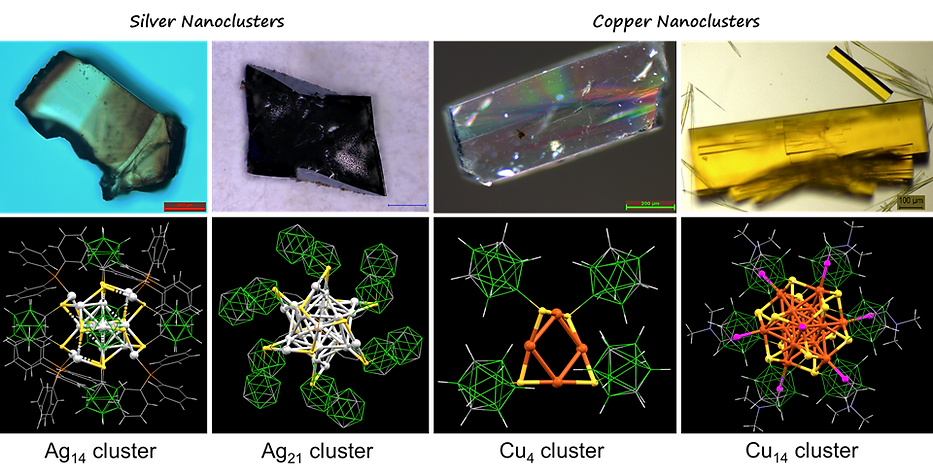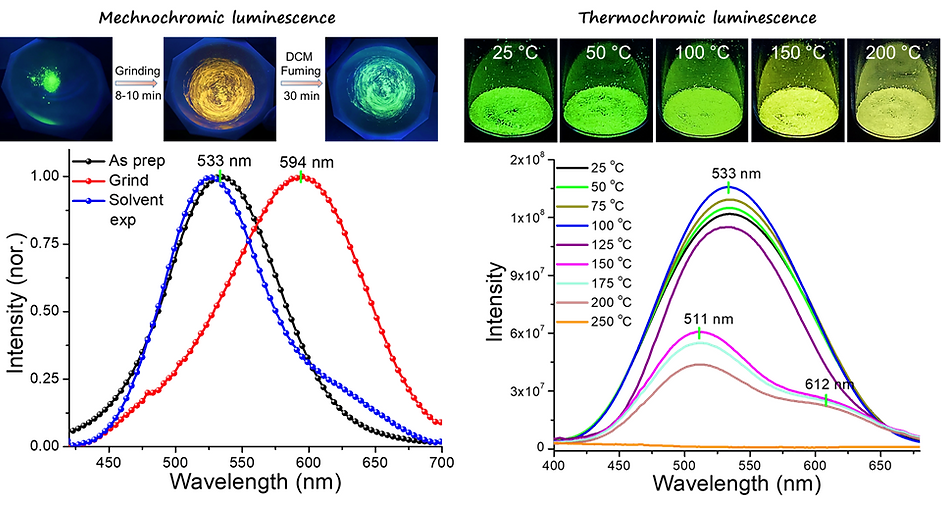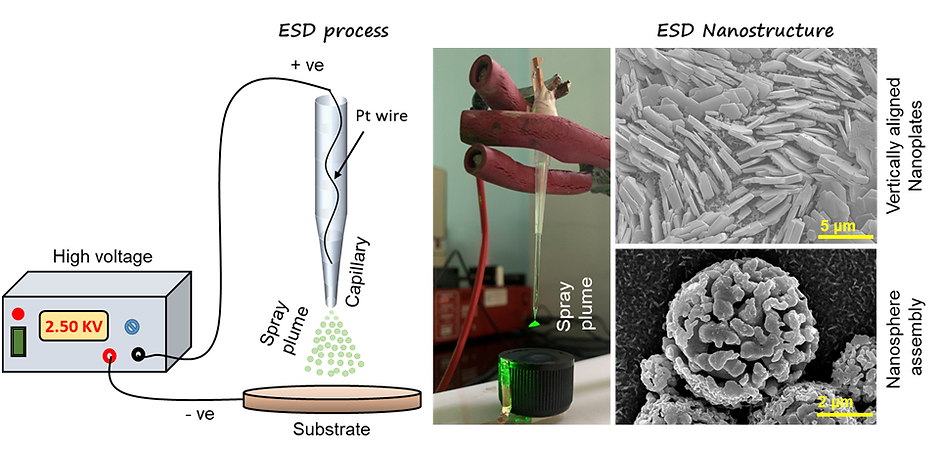

Atomically precise metal nanocluster
Atomically precise nanoclusters (NCs) of noble metals with core dimension <3 nm, composed of tens to hundreds of atoms, are an emerging class of nanomaterials with specific properties, representing a distinct category of materials between atoms and traditional nanoparticles. Various ligands, such as thiols, phosphines, selenols, carbenes, etc., present on the surface of these particles have a profound role in controlling their nuclearity, shape, size, and stability. Synthesis, crystallization, and understanding the surface chemistry of these atomic entities is a major interest of mine.
Nanocluster assembled solids

Cluster-assembled materials
Cluster-assembled materials (CAM) are a new class of superstructure materials made by clusters, which act as a building blocks. Currently, we are working on three types of these materials, i.e., a) self-assembled clusters (SAC), b) cluster-encapsulated solids (CES), and c) clusters-assembled framework (CAF). SAC materials formed through favorable interparticle interactions resulted in spheres, fibers, nanofilms, and microcrystalline solids. We are synthesizing CES materials, where polymers and 2D materials act as templates. CAFs are formed by clusters and linkers. Generally, amines and phosphines are used as linkers for synthesizing such materials. These materials showed enhanced stability of clusters and posed unique combined functional properties.

Stimuli responsive materials
Optical absorption and emission behaviors under external stimuli are another research area. We have studied the pressure and temperature-dependent luminescence of various metal clusters and organic luminoborane compounds. We are currently working on the development of pressure-sensitive multicolor luminescence materials with enhanced mechanosensitivity.

Molecular sensor
Molecular recognition of analyte or gaseous species through optical or electrical signals resulted in various molecular sensors. We studied nitrotoluene recognition in the gas phase using a cluster-assembled film. Selective and sensitive detection of nitroaromatics by luminescence quenching was observed using this film. We are also working on the development of an electrochemical sensor using transition metal clusters to detect water-based contaminants.

Electrospray deposition
Electrospray deposition (ESD) is an ambient nanofabrication technique to prepare nanostructured materials. Charged microdroplets formed from the microcapillary by applying high voltage create specific nanostructure on a suitable substrate. We have synthesized copper sulfide nanopyramids and platelets by depositing sulfur ions on copper surfaces. Other work demonstrated the fabrication of cluster-assembled 2D film suitable for sensing applications.
